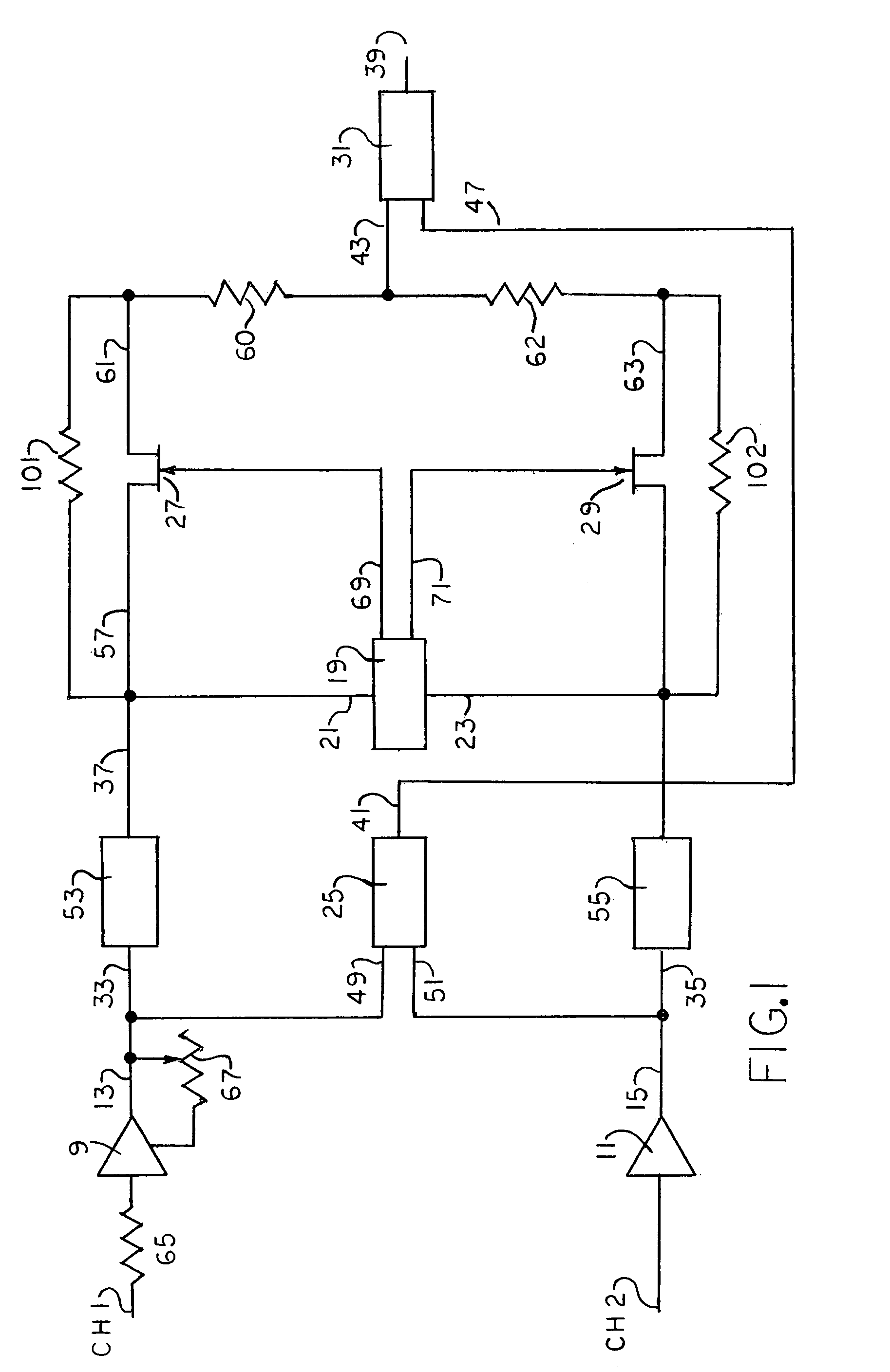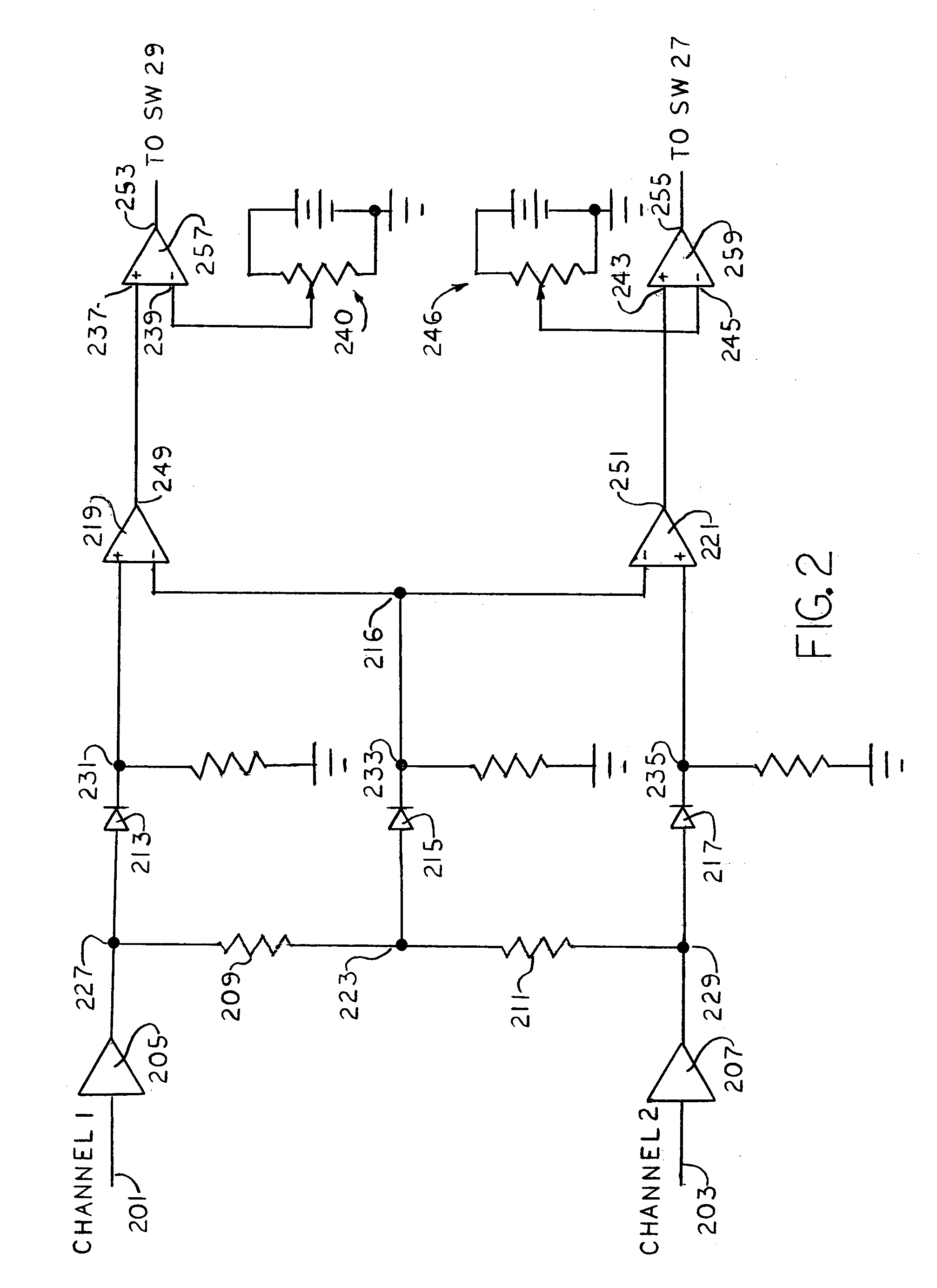System for reducing noise in the reproduction of recorded sound signals
a sound signal and reproduction technology, applied in the field of electrical signal processing, can solve the problems of ineffective suppression of noise components of opposite polarities, difficulty in distinguishing drum transients from noise transients, blankers sometimes producing audible artifacts, etc., to achieve effective treble attenuation characteristic, reduce minimum cutoff frequency, and reduce noise
- Summary
- Abstract
- Description
- Claims
- Application Information
AI Technical Summary
Benefits of technology
Problems solved by technology
Method used
Image
Examples
Embodiment Construction
[0012]The three systems or processing stages for removing noises from sound signals emanating from such sources as sound recordings, radio broadcasts and the like, may be employed individually or in combination, as dictated by the requirements of the job at hand. The first disclosed system, the Switcher, two signals which are substantially identical in program content, but which may differ in total signal amplitude due to differing noise content, are received simultaneously on respective channels and appropriate electronic circuitry compares to two input (total) signals and transmits to the recording or reproducing apparatus either: 1. an equal mixture (average) of the two input signals, or 2 the input signal on one of the channels. When that input signal has an amplitude which is lower than the average of the amplitudes of the two input signals by more than a predetermined threshhold amount.
The Switcher
[0013]Referring now to FIG. 1, there is illustrated a system which includes two ...
PUM
 Login to View More
Login to View More Abstract
Description
Claims
Application Information
 Login to View More
Login to View More - R&D
- Intellectual Property
- Life Sciences
- Materials
- Tech Scout
- Unparalleled Data Quality
- Higher Quality Content
- 60% Fewer Hallucinations
Browse by: Latest US Patents, China's latest patents, Technical Efficacy Thesaurus, Application Domain, Technology Topic, Popular Technical Reports.
© 2025 PatSnap. All rights reserved.Legal|Privacy policy|Modern Slavery Act Transparency Statement|Sitemap|About US| Contact US: help@patsnap.com



